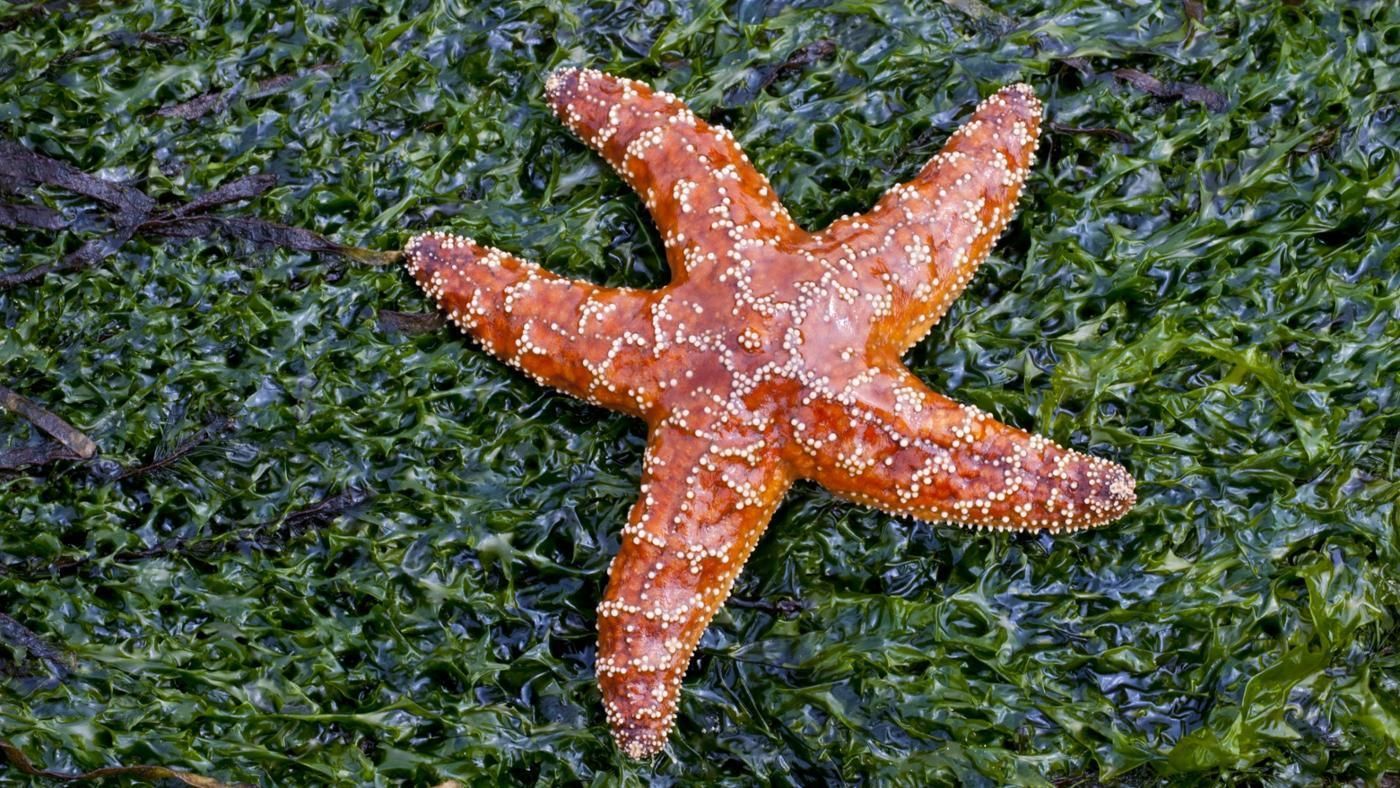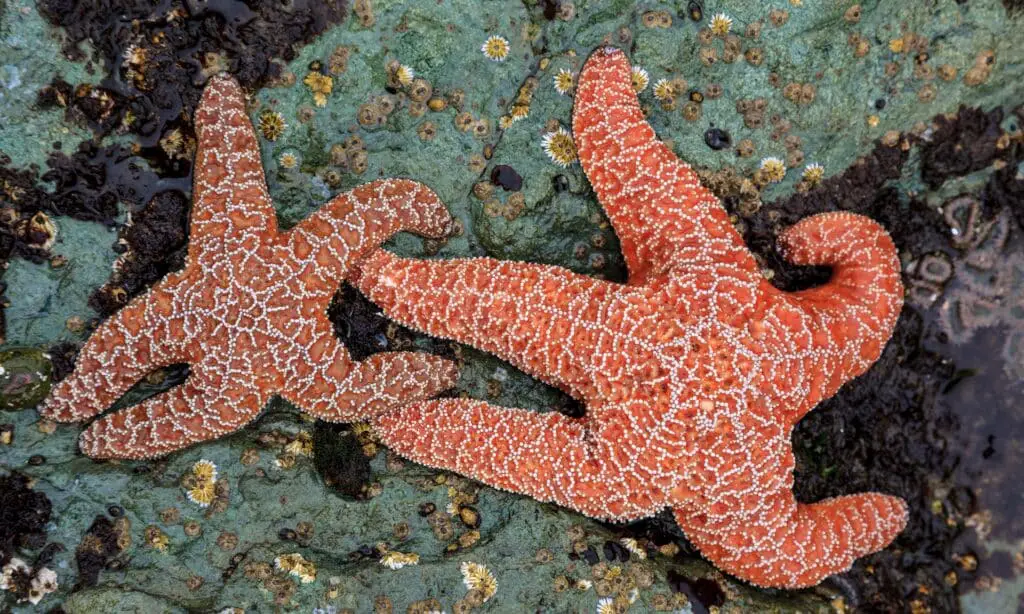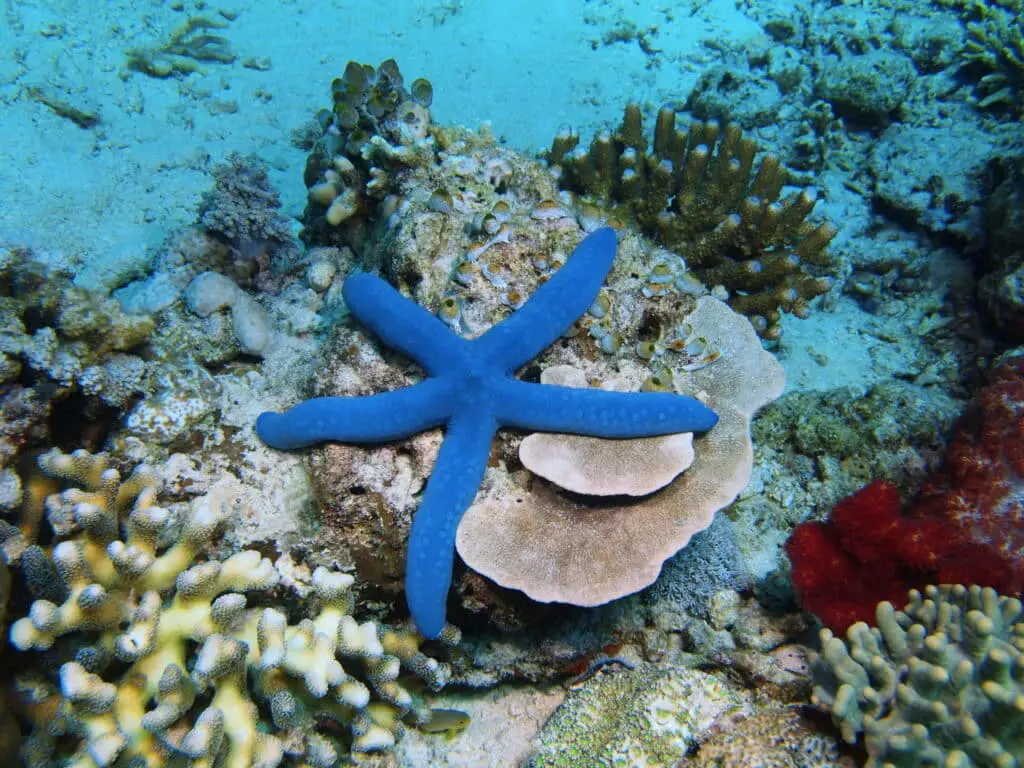How Do Starfish Move

Introduction
How Do Starfish Move: Beneath the tranquil surface of the world’s oceans lies a mesmerizing world of creatures that defy our understanding of motion and grace. Among these enigmatic beings are starfish, also known as sea stars, with their five arms outstretched like celestial rays. But have you ever wondered how these seemingly simple creatures navigate the complex and ever-changing underwater realm? Our journey into the world of starfish locomotion delves into the mysteries of their movement.
The concept of movement often conjures images of legs, fins, or wings propelling creatures through their environments. Yet, starfish challenge these conventional notions with their slow, methodical, and almost otherworldly manner of travel. How is it that these marine wonders traverse the ocean floor, rocky reefs, and even vertical surfaces with such apparent ease?
In this exploration, we embark on a quest to unravel the secrets behind starfish locomotion. We delve into the biology and anatomy of these fascinating echinoderms, understanding the role of their unique hydraulic water vascular system and tube feet. We witness the mesmerizing ballet of tube feet in action, propelling starfish forward with a grace that belies their simplicity.
Moreover, we venture beyond the purely scientific and delve into the ecological significance of starfish movement. We explore how their mobility influences their feeding habits, interactions with other marine organisms, and even their role in maintaining the balance of fragile underwater ecosystems.
As we journey deeper into the mysteries of how starfish move, we discover not only the marvels of nature’s engineering but also the interconnectedness of life beneath the waves. Join us in peeling back the layers of aquatic intrigue, as we unveil the secrets of starfish locomotion and the captivating dance of life in the ocean’s depths.

Do starfish crawl or walk?
Starfish are star-shaped, but they are not fish. They are invertebrates (animals without backbones) that live in the sea. Although these creatures cannot swim, they are very good at crawling and can walk up strands of seaweed and climb down the sides of rocks.
Starfish neither crawl nor walk in the traditional sense that we associate with animals that have legs or feet. Instead, they have a unique mode of movement that can be described as a slow and graceful glide or “crawling” across the ocean floor. They accomplish this movement using thousands of tiny, tube-like structures called tube feet that cover the underside of their bodies. These tube feet are filled with water and function in a hydraulic system. By manipulating the pressure of water within their tube feet, starfish can extend, contract, and move them to push themselves along surfaces in a slow and almost mesmerizing manner. While it may appear like crawling, it’s a distinctly different mode of movement that is well-suited to their underwater lifestyle.
What is the movement of starfish called?
All those tiny tube feet contracting is what drags the starfish along. During their usual crawling gate, starfish tube feet extend, connect to the substrate and then contract to slowly drag the starfish forward. “Normally, they either sit around or they glide very slowly,” Ellers said.
The movement of starfish can be described as a combination of “gliding” and “crawling.” They use their tube feet to create a series of suction-cup-like attachments to the substrate, allowing them to move slowly and gracefully. This movement is a testament to the remarkable adaptation and hydraulic system of starfish, which enables them to navigate a variety of underwater environments.
How can starfish move on land?
The animals rely on scores of tiny hydraulic “feet” that stick out underneath them. Usually, fluid fills and empties the podia at random to slide the starfish forward. For bouncing, the podia get in sync, with each third of them all filling at one time while the rest are swinging forward.
Starfish are primarily marine creatures and are not adapted for movement on land. Their tube feet and hydraulic system are specifically designed for underwater environments, where they rely on the buoyancy and support of water to facilitate their movement. On land, starfish would encounter significant challenges due to their lack of adaptations for terrestrial locomotion. They would likely struggle to move effectively, and prolonged exposure to air could be detrimental to their health. Therefore, starfish are best observed and appreciated in their natural underwater habitats, where they showcase their unique and fascinating mode of gliding and crawling across the ocean floor.
How do starfish move for kids?
Starfish move with hundreds of feet
Starfish are equipped with hundreds of tiny little feet at the end of each arm. To move, they fill these feet with seawater, causing the arm to move like a foot would. This mechanism allows the starfish to move – much quicker than you might expect.
Starfish, also known as sea stars, are fascinating creatures that move in a unique and interesting way. Imagine they have tiny tube feet on the underside of their bodies, almost like tiny suction cups. These tube feet are like their secret superpower!
Here’s how starfish use their tube feet to move:
Holding on: First, starfish use their tube feet to grab onto rocks, coral, or the ocean floor. It’s like they’re giving these surfaces a big hug!
Squeeze and release: Once they’ve grabbed on, starfish can squeeze their tube feet and create suction. This helps them stay firmly attached.
Moving forward: Starfish then release the suction in some of their tube feet while squeezing others. This action allows them to move their arms in a coordinated way. It’s almost like they’re giving themselves a little push with their tube feet.
Repeat: They keep doing this, moving their tube feet in a coordinated pattern, to glide along the ocean floor. It’s slow and graceful, like a gentle dance.
So, starfish don’t walk or crawl like we do; they glide using their amazing tube feet. It’s a bit like they’re flying underwater!
How do sea stars walk and grab?
The ends of the tube feet have suckers that attach to whatever the sea star is walking on or grabbing, and the tube feet hold tight as specialized muscles contract to help pull the animal forward. This cycle is repeated as the sea star traverses across the sea floor.
Sea stars, or starfish, have a fantastic way of walking and grabbing things underwater. They use their special body parts called tube feet.
Here’s how they do it:
Tube feet: Imagine if you had lots of tiny arms with suction cups on them. That’s what a sea star’s tube feet are like. They have these tube feet on their underside.
Grabbing on: Sea stars use their tube feet to grab onto rocks, shells, and the ocean floor. It’s like they’re giving these things a big hug!
Squeeze and release: Once they’ve grabbed on, sea stars can squeeze their tube feet to make them stick really well. It’s a bit like using suction cups.
Walking: Sea stars move their tube feet in a special way to walk. They coordinate the movement of their tube feet to glide along the ocean floor. It looks slow and graceful, like they’re doing an underwater dance.
Grabbing food: Sea stars also use their tube feet to catch their food. When they find something yummy like a clam or mussel, they use their tube feet to open the shells and then slide their stomach outside of their body to eat. It’s like they’re having dinner delivered!
So, sea stars have this amazing way of walking, grabbing things, and even catching their food using their tube feet. It’s a bit different from how we move, but it’s perfect for their underwater world.
Do starfish float or sink?
As to the floating: While many starfish are found in inter-tidal zones (just below water level), some have been found 20,000 feet (that’s almost 4 miles) below the surface. None of them float on top of the water.
Starfish typically do not float like a balloon or sink like a stone. Instead, they maintain a state of buoyancy, which allows them to hover in the water column or rest on the ocean floor. This buoyancy is achieved through a combination of factors:
Water vascular system: Starfish have a unique hydraulic system called a “water vascular system.” This system uses water pressure to control the movement of their tube feet, which are tiny, suction-cup-like structures on the underside of their bodies. By adjusting the water pressure within this system, starfish can control their buoyancy.
Ampullae: Special structures called ampullae are connected to the tube feet and help regulate the amount of water in them. When they pump water into their tube feet, they extend and grip onto surfaces, allowing starfish to move and maintain their position. When they release water, they become less buoyant and can settle on the ocean floor.
Pedicellariae: Tiny pincer-like structures called pedicellariae help starfish maintain a clean surface and prevent fouling. They can also help with buoyancy control by removing debris or organisms that might affect the starfish’s ability to maintain neutral buoyancy.
So, rather than floating or sinking, starfish actively control their position in the water column by adjusting the pressure within their water vascular system. This allows them to stay afloat, hover, or settle on the ocean floor as needed.
Can starfish move on sand?
But they can walk on rocks, sand and mud using the thousands of tiny suckers on the underside of their long legs, which contract to grip surfaces. Some starfish can move up to 50 millimetres (two inches) per second. The striking creatures need to stay fairly wet and will die if they stay out of the water for too long.
Yes, starfish can move on sand, but their ability to do so depends on the specific type of sand and the starfish species. Starfish are adapted for moving on a variety of substrates, including sand, rock, and even seagrass beds.
When a starfish moves on sand, it uses its tube feet to create a series of suction-cup-like attachments to the sand particles. By coordinating the movement of its tube feet, a starfish can slowly and methodically glide across the sandy bottom. This movement is typically slower compared to their movement on hard surfaces like rocks, but it allows them to explore and forage in sand-rich habitats.
The ability to move on sand is advantageous for certain starfish species that inhabit sandy coastal areas or seafloors where they can find food or seek refuge from predators.
Do starfish live in water?
Starfish species inhabit all of the world’s oceans. Habitats range from tropical coral reefs, rocky shores, tidal pools, mud, and sand to kelp forests, seagrass meadows and the deep-sea floor down to at least 6,000 m (20,000 ft).
Yes, starfish, also known as sea stars, are marine animals that live exclusively in water. They are well-adapted to various marine environments, from intertidal zones to deep-sea habitats. Starfish are members of the phylum Echinodermata and are closely related to sea urchins, sea cucumbers, and sand dollars.
These fascinating creatures have evolved to thrive in a range of oceanic conditions, from the shallows near the shore to the profound depths of the ocean. They are typically found on the seafloor, often clinging to rocks, coral reefs, or other substrates using their tube feet. Their entire biology, including their water vascular system, gills, and feeding adaptations, is specialized for life in an aquatic environment.
So, to answer your question, starfish are indeed creatures of the sea, and they require water for their survival. They breathe through tiny gills, obtain their food from marine sources, and have evolved to navigate and thrive in the complex world of the underwater realm.

Conclusion
In the ethereal world beneath the ocean’s surface, starfish gracefully defy our preconceived notions of movement. These seemingly simple creatures, with their five arms and slow, deliberate pace, have unveiled the secrets of a unique and mesmerizing locomotion. Our exploration into how starfish move, we find ourselves captivated by the enigmatic elegance of their journey.
Starfish, or sea stars, rely on a hydraulic water vascular system and tube feet to navigate the complex underwater realm. Through the exquisite coordination of these intricate structures, they glide across the ocean floor, ascend rocky reefs, and even cling to vertical surfaces with a grace that borders on the surreal. The mesmerizing ballet of their tube feet reveals a profound harmony between form and function.
Our journey has also unveiled the ecological significance of starfish movement. Their mobility influences their feeding habits, allowing them to hunt and capture a variety of prey. Furthermore, their interactions with other marine organisms, such as mussels and algae, influence the dynamics of entire ecosystems. Starfish play a crucial role in maintaining the balance of underwater environments, a role that underscores their importance in the delicate tapestry of marine life.
As we peel back the layers of aquatic intrigue, we gain not only a deeper understanding of starfish locomotion but also a profound appreciation for the interconnectedness of life in the oceans. The mysteries of how starfish move reveal the marvels of nature’s engineering and the undeniable allure of the world beneath the waves.
The enigmatic elegance of starfish locomotion invites us to embrace the wonder and complexity of life in the oceans, reminding us of the inexhaustible mysteries that continue to beckon exploration and discovery in the watery depths of our planet.



